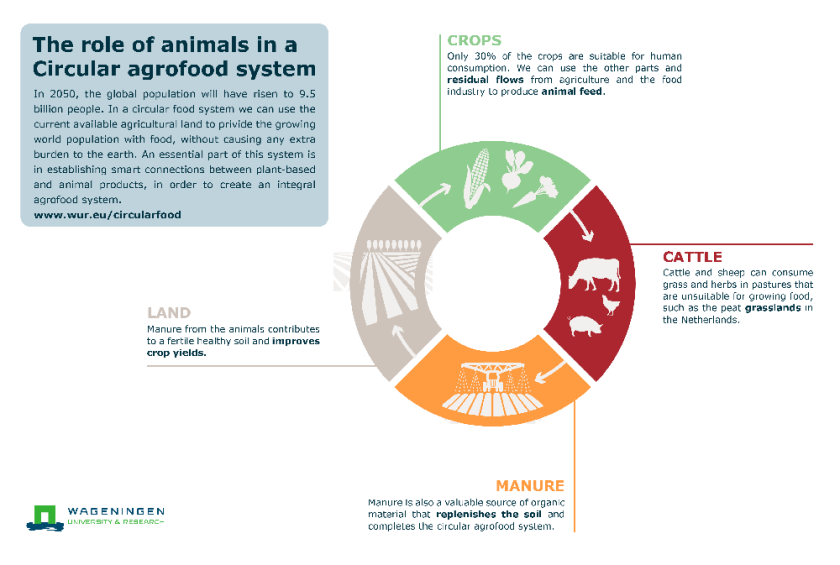
Dossier
Circular agrofood system
By 2050, the global population will have grown to around 9.5 billion people. Unless we change our patterns of production and consumption, we risk exhausting the planet’s resources. Circular agriculture enables us to produce enough food for everyone within the boundaries set by our planet.
An efficient system for food production
The existing linear agricultural system in the Netherlands is based on individual supply chains dedicated to producing as much food as possible at minimal environmental cost. The Dutch system is praised all over the world for its outstanding efficiency. But new studies have shown that biomass within this linear food system is not being used as optimally as it could. Grains that could be used to feed people are being fed to animals instead, for example.

Optimal use of all biomass
Circular agriculture is based on the principle of optimising the use of all biomass. The waste streams of one supply chain can be the raw materials for another. In this scenario, animals would be fed from our food waste. Achieving this kind of circular agriculture system will require smart integration between plant-based and animal-based supply chains.
Examples of circular agrofood systems
Crop production in a circular agrofood system is designed to ‘lock in’ minerals and organic material, so that they can be used to their fullest potential. For instance, crops will utilise nutrients from the soil more effectively than now. In the future, crops such as potatoes or rice may be able to bind atmospheric nitrogen for their food (leguminous plants are already capable of doing so). Precision agriculture offers a very targeted way of providing plants with the necessary nutrients.
A circular agrofood system uses residual flows from agriculture and the food industry to produce animal feed. These flows may be the parts of a plant that we now think of as having no use, such as straw and foliage. By using insects, worms or fungi, we can convert this matter into nutrient-rich raw materials for animal feed.
Cattle and sheep in a circular agrofood system would consume grass and herbs in pastures that are unsuitable for growing food, such as the peat grasslands in the Netherlands.
This allows the animals to convert residual flows and crops that are unsuitable for human consumption into high-quality, protein-rich food for people. This could be milk, eggs, or meat.
The animals’ manure is also a valuable source of organic material that replenishes the soil and completes the circular agrofood system.
A sustainable diet
Animals convert residual flows that we do not want or can not eat into protein-rich food. Preliminary calculations indicate that in a circular agrifood system the most sustainable diet contains about 20 grams of animal protein per day.

Related dossiers
Related themes
- Circular & Biobased Economy
- Circular economy field crops
- Ecological intensification of agriculture
- Livestock and circular agrifood systems
- Sustainable Land Use
- Value creation from agrifood side streams within the circular economy
- External website: ACRRES, the national centre for applied research on renewable energy and green resources





















